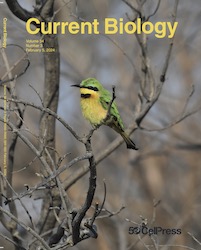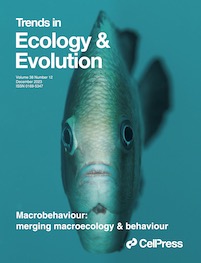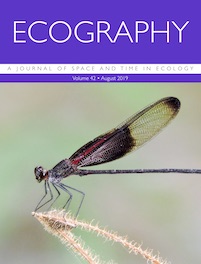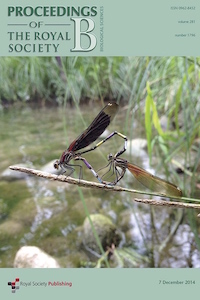Selected Publications
Google Scholar profile
(e-mail for reprints)
2024
 Drury, J., Clavel, J. Tobias, J., Rolland, J., Sheard, C., & Morlon H. Limited ecological opportunity influences the tempo of morphological evolution in birds. Current Biology. doi: 10.1016/j.cub.2023.12.055
Drury, J., Clavel, J. Tobias, J., Rolland, J., Sheard, C., & Morlon H. Limited ecological opportunity influences the tempo of morphological evolution in birds. Current Biology. doi: 10.1016/j.cub.2023.12.055
Leighton, G.§, Drury, J.§, Small, J., & Miller, E. Unfamiliarity generates costly aggression in interspecific dominance hierarchies. Nature Communications. doi: 10.1038/s41467-023-44613-0
§co-first authors
Grether, G., Finneran, A., & Drury, J.. Niche differentiation, reproductive interference, and range expansion. Ecology Letters. doi: 10.1111/ele.14350
Patterson, C., Bonillas-Monge, E., Brennan, A., Grether, G., Mendoza-Cuenca, L., Tucker, R., Vega-Sánchez, Y. & Drury, J. 2024. A chromosome-level genome assembly for the smoky rubyspot damselfly (Hetaerina titia). Journal of Heredity. doi:10.1093/jhered/esad070
McEachin, S., Drury, J., & Grether, G. 2024. Competitive displacement and agonistic character displacement, or the ghost of interference competition. The American Naturalist. doi:10.1086/728671
2023
 Patterson, C. & Drury, J. 2023. Interspecific behavioural interference and range dynamics: current insights and future directions. Biological Reviews. doi:10.1111/brv.12993
Patterson, C. & Drury, J. 2023. Interspecific behavioural interference and range dynamics: current insights and future directions. Biological Reviews. doi:10.1111/brv.12993
Nesbit, D., Cowen, M., Grether, G., & Drury, J. 2023. Interspecific territoriality has facilitated recent increases in the breeding habitat overlap of North American passerines. Ecography. doi:10.1111/ecog.06573
Keith, S. & Drury, J., McGill, B., & Grether, G. 2023. Macrobehaviour: Behavioural variation across space, time and taxa. TREE. doi:10.1016/j.tree.2023.08.007
2022
Standring, S., Sanchez, M., Guillermo-Ferreira, R., Ware, J., Vega-Sánchez, Y., Clement, R., Drury, J., Grether, G., & Bybee, S 2022. Evolution and biogeographic history of rubyspot damselflies (Hetaerininae: Calopterygidae: Odonata). Diversity. doi:10.3390/d14090757
McEachin, S., Drury, J., Anderson, C., & Grether, G. 2022. Mechanisms of reduced interspecific aggression between territorial species. Behavioural Ecology. doi:10.1093/beheco/arab115
2021
Drury, J., Clavel, J., Tobias, J., Rolland, J., Sheard, C., & Morlon, H. 2021. Tempo and mode of morphological evolution are decoupled from latitude in birds. PLOS Biology. doi:10.1371/journal.pbio.3001270
Baker, E., Drury, J., Judge, J., Roy, D., Smith, G., & Stephens, P. 2021. The verification of ecological citizen science data. Citizen Science: Theory and Practice. doi:10.5334/cstp.351
2020
Drury, J., Cowen, M., & Grether, G. 2020. Competition and hybridization drive interspecific territoriality in birds. Proceedings of the National Academy of Science. doi:10.1073/pnas.1921380117
 Cowen, M., Drury, J., & Grether, G. 2020. Multiple routes to interspecific territoriality in sister species of North American perching birds. Evolution. doi: 10.1111/evo.14068
Cowen, M., Drury, J., & Grether, G. 2020. Multiple routes to interspecific territoriality in sister species of North American perching birds. Evolution. doi: 10.1111/evo.14068
Grether, G., Drury, J., N., Okamoto, K., McEachin, S., & Anderson, C. 2020. Predicting evolutionary responses to interspecific interference in the wild. Ecology Letters. doi: 10.1111/ele.13395
2019
Drury, J., Anderson, C., Cabezas Castillo, M., Fisher, J., McEachin, S., & Grether, G. 2019. A general explanation for the persistence of reproductive interference. The American Naturalist. doi:10.1086/704102
 Drury, J., Barnes, M., Finneran, A., Harris, M., & Grether, G. 2019. Continent-scale phenotype mapping using citizen scientists’ photographs. Ecography. doi:10.1111/ecog.04469
Drury, J., Barnes, M., Finneran, A., Harris, M., & Grether, G. 2019. Continent-scale phenotype mapping using citizen scientists’ photographs. Ecography. doi:10.1111/ecog.04469
Harmon, L., Andreazzi, C., Débarre, F., Drury, J., Goldberg, E., Martins, A., Melián, C., Narwani, A., Nuismer, S., Pennell, M., Rudman, S., Seehausen, O., Silvestro, D., Weber, M., & Matthews, B. 2019. Detecting the macroevolutionary signal of species interactions. Journal of Evolutionary Biology. doi:10.1111/jeb.13477
2018
Drury, J., Tobias, J., Burns, K., Mason, N., Shultz, A., & Morlon, H. 2018. Contrasting impacts of competition on ecological and social trait evolution in songbirds. PLOS Biology. doi:10.1371/journal.pbio.2003563
Drury, J., Grether, G., Garland, T., & Morlon, H. 2018. An assessment of phylogenetic tools for analyzing the interplay between interspecific interactions and phenotypic evolution. Systematic Biology. doi:10.1093/sysbio/syx079
Tinghitella, R., Lackey, A., Martin, M., Dijkstra, P., Scordato, L., Heathcote, R., Drury, J., Keagy, J., & Tyers, A. 2018. On the role of male competition in speciation: A review and research agenda. Behavioral Ecology. doi:10.1093/beheco/arx151
2017
Putman, B., Drury, J., Blumstein, D., & Pauly, G. 2017. Fear no colors? Observer clothing color influences lizard escape behavior. PLOS One. doi:10.1371/journal.pone.0182146
· covered by NPR and Scientific American
2016
Drury, J., Clavel, J., Manceau, M., & Morlon, H. 2016. Estimating the effect of competition on trait evolution using maximum likelihood inference. Systematic Biology. doi:10.1093/sysbio/syw020
Losin, N., Drury, J., Peiman, K., Storch, C., & Grether, G.2016. The ecological and evolutionary stability of interspecific territoriality. Ecology Letters. doi:10.1111/ele.12561
Morlon, H., Lewitus, E., Condamine, F., Manceau, M., Clavel, J., & Drury, J. 2016. RPANDA: an R package for macroevolutionary analyses on phylogenetic trees. Methods in Ecology & Evolution. doi:10.1111/2041-210X.12526
Drury, J. & Burroughs, N. 2016. Nest shape explains variation in sexual dichromatism in New World blackbirds. Journal of Avian Biology. doi:10.1111/jav.00757
2015
Hensley, N., Drury, J., Garland, T., & Blumstein, D. 2015. Vivid birds do not initiate flight sooner despite their potential conspicuousness. Current Zoology. 61(4): 773-780
 Drury, J., Anderson, C., & Grether, G. 2015. Seasonal polyphenism in wing coloration affects species recognition in rubyspot damselflies (Hetaerina spp.). Journal of Evolutionary Biology. doi:10.1111/jeb.12665
Drury, J., Anderson, C., & Grether, G. 2015. Seasonal polyphenism in wing coloration affects species recognition in rubyspot damselflies (Hetaerina spp.). Journal of Evolutionary Biology. doi:10.1111/jeb.12665
Grether, G., Drury, J., Berlin, E., & Anderson, C. 2015. The role of wing coloration in sex recognition and competitor recognition in rubyspot damselflies (Hetaerina spp.). Ethology. doi:10.1111/eth.12382
Drury, J., Okamoto, K., Anderson, C., & Grether, G. 2015. Reproductive interference explains persistence of aggression between species. Proceedings of the Royal Society: B. doi:10.1098/rspb.2014.2256
·covered by UCLA Newsroom
Before 2015
 Drury, J. & Grether, G. 2014. Interspecific aggression, not interspecific mating, drives character displacement in the wing coloration of male rubyspot damselflies (Hetaerina). Proceedings of the Royal Society: B. doi: 10.1098/rspb.2014.1737
Drury, J. & Grether, G. 2014. Interspecific aggression, not interspecific mating, drives character displacement in the wing coloration of male rubyspot damselflies (Hetaerina). Proceedings of the Royal Society: B. doi: 10.1098/rspb.2014.1737
· covered by Anole Annals
Grether, G., Anderson, C., Drury, J., Kirschel, A., Losin, N., Okamoto, K., & Peiman, K. 2013. The evolutionary consequences of interspecific aggression. Annals of the NY Academy of Sciences. doi: 10.1111/nyas.12082
Journey, L., Drury, J., Haymer, M., Rose, K. & Blumstein, D. 2013. Vivid birds respond more to acoustic signals of predators. Behavioral Ecology & Sociobiology. doi: 10.1007/s00265- 013-1556-z
Anderson, C., Córdoba-Aguilar, A., Drury, J., & Grether, G. 2011. An assessment of marking techniques for odonates in the family Calopterygidae. Entomologia Experimentalis et Applicata 141:258-261. doi: 10.1111/j.1570-7458.2011.01185.x
Drury, J. & Gowaty, P. 2010. Social Selection, Sexual Selection, and Sexual Conflict. In: Encyclopedia of Animal Behavior (Eds. M Breed and J. Moore) Academic Press, San Diego.
Drury, J. 2010. Immunity & mate choice: a new outlook. Animal Behaviour 79:539-545. doi:10.1016/j.anbehav.2009.12.023